BLOG
Finds and Interests
Perhaps when you think about the one that got away, you think of a long-lost love you regret losing. The overwhelming disappointment has faded, leaving you fantasizing about what might have been—if only you knew what you had before it was gone. You may have the same feeling when the one thing standing between you and a collectible Satsuma vase is the braver bid of someone more knowledgeable.
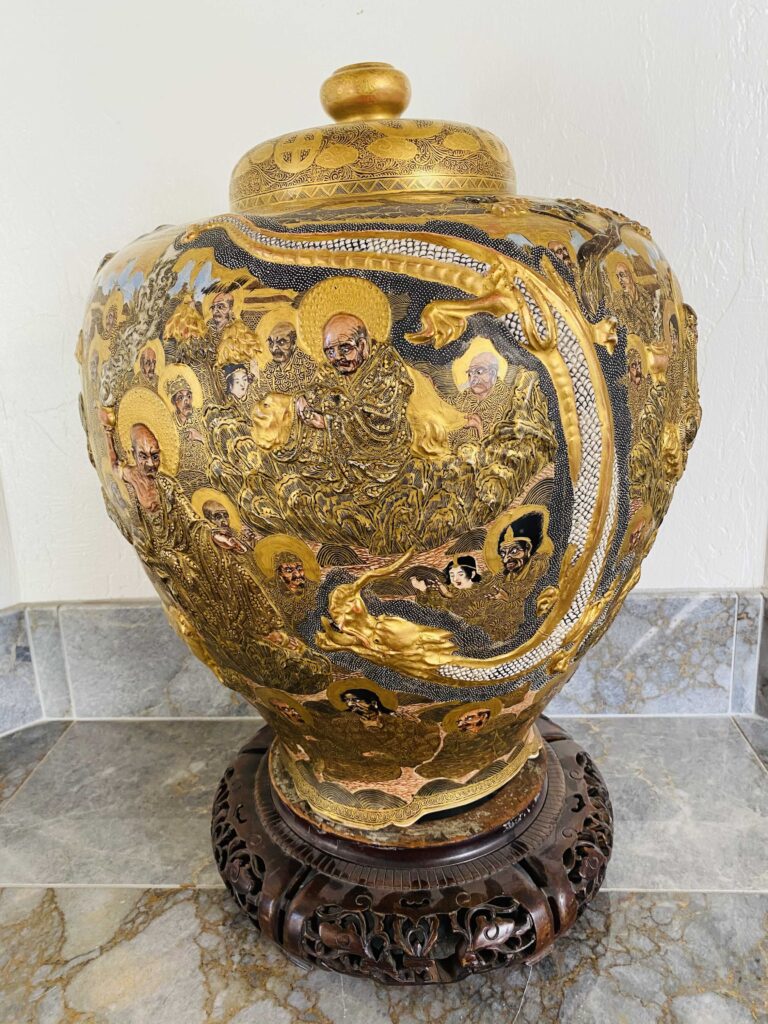
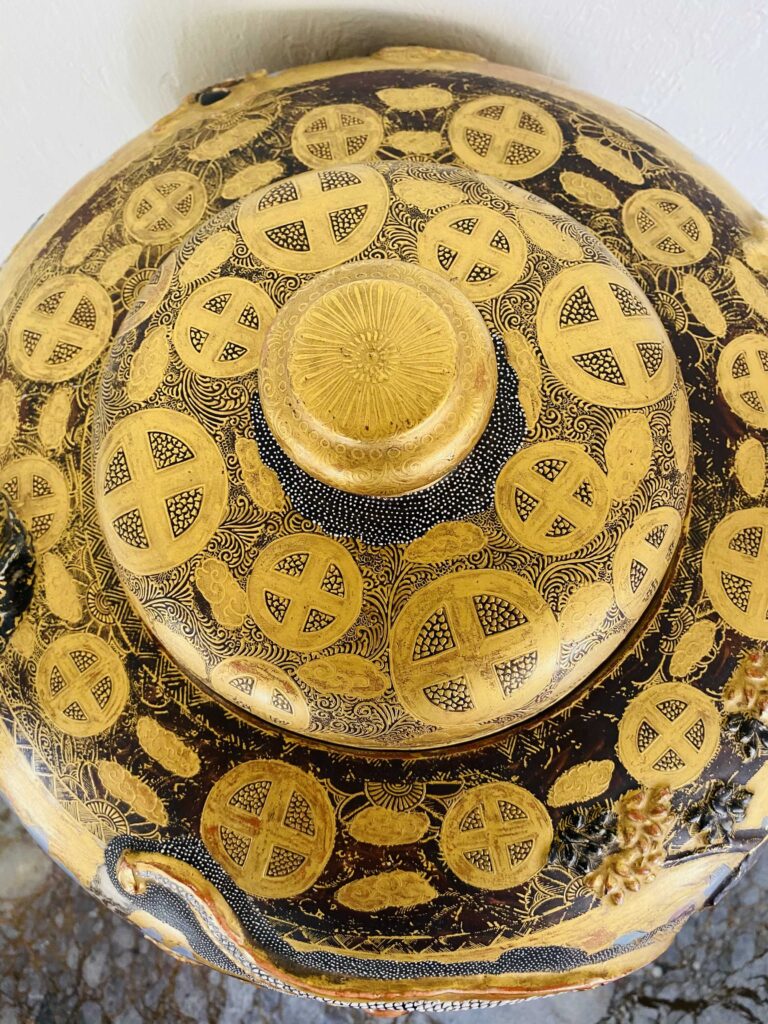
Image credit: CTBids, ctbids.com
The Thrill of the Hunt
I found this heartbreaker of a piece, shown above, when I was cruising through CTBids.com, looking at the higher-priced items in the art category. The vase’s heavily gilded body caught my eye, and I knew this was not something to scroll past. I saw the Shimazu mon crest on the top, so I made my first bid, quickly launching a bidding war against other lustful collectors. After what seemed like an eternity, the week was over, and the victor was awarded their prize—for over $3,300. Unfortunately for me, I left the battlefield empty-handed. Someone a bit more knowledgeable and appreciative of the vase’s value had won.
Satsuma wares often contain a fair amount of negative space, which contributes to the overall beauty of the depicted scene. However, the piece I came across features many details, even for export ware. The design appears to be a thousand-face Buddhist design, and the imagery is close to Indian and Chinese Buddhist motifs. The top of the vase includes the Shimazu crest, a mark frequently seen on Satsuma ware. The Shimazu crest was a family crest used by the clan in Satsuma Province (modern-day Kagoshima Prefecture) in Kyushu. The bottom of the piece includes a kanji mark and the Shimazu crest. The kanji characters are obsolete, likely containing information regarding the artists and where it was made.
Background on Satsuma pieces
The story of Satsuma ware began more than four hundred years ago in seventeenth-century Japan. Japan’s re-unifier, Toyotomi Hideyoshi, was determined to conquer Korea. Although Japan was unsuccessful in subduing Korea, the Japanese did not return empty-handed. After the 1594–96 invasion, they captured and enslaved Korean artisans. The “daimyo” (feudal lords) of Satsuma forced the Korean potters to create Japanese ware, called Satsuma ware. Satsuma became wildly popular, and its popularity only grew over the next century.
Satsuma can be classified into two styles. The earlier pieces, “Ko-Satsuma,” were introduced by Korean artisans in the sixteenth century and are characterized by a heavy glaze, often beige, cream, or white. They are most commonly plain with inscribed patterns depicting a two-dimensional landscape.
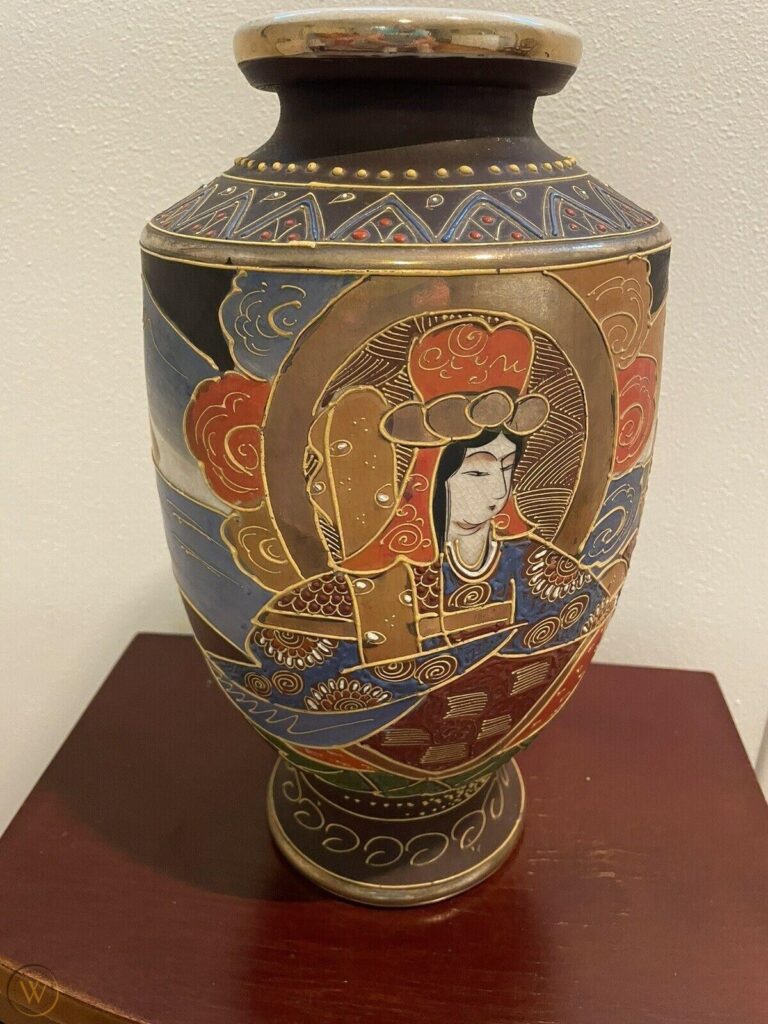
Image: WorthPoint
Near the 1800s, a new style of Satsuma appeared called “Kyo-Satsuma.” These pieces typically show an ivory base with finely cracked transparent glaze. Although the designs are still simple, the color of the details evolved to iron red, purple, blue, turquoise, black, and yellow. There was also a shift to attract buyers from the West, so the designs depicted more Japanese scenes (e.g., cherry blossoms, birds, flowers, and men and women in traditional dress). Because of the increased demand from the West, the market became over-saturated with mass-produced work lacking the quality of earlier Satsuma ware.
Collecting Advice
If you are interested in collecting but don’t know where to begin, Satsuma is a great start. Because of the difference in quality between examples, Satsuma prices can vary from less than one hundred to several thousand dollars. I recommend looking at online auctions to better understand the relationship between price and quality. There are a few things that you, as a buyer, can look for to help identify if a genuine piece.
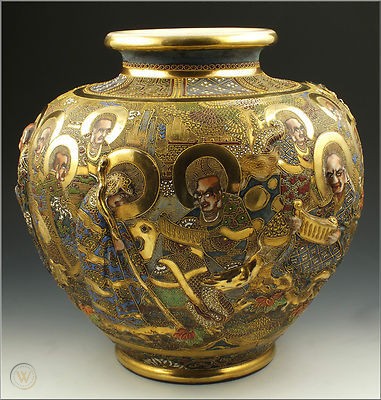
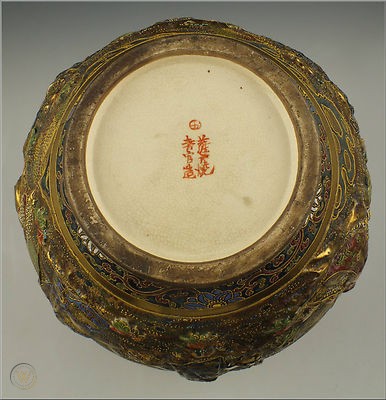
Image: WorthPoint
First, Satsuma vases are earthenware. Because earthenware is more porous and coarser than porcelain, these pieces are heavier, hardier, and less resonant than porcelain examples. The background is usually light neutral and has a shiny, delicately cracked effect. Artisans often applied the foreground painting on top of the glaze, using a matte-style finish. You can sometimes feel it if you gently rub your finger over the detailing. Depending on whether the piece is an early or late Satsuma item, you might see fine details that appear as watercolor.
The most defining characteristic of an earlier and more valuable piece of Satsuma is the “Shimazu mon.” This mark is the family crest of the Satsuma feudal lord who ruled the land and people of Kagoshima for over seven hundred years. The crest is a circle with a cross inside and can appear on the piece’s underside or exterior. If you see a “Made in Japan” carving rather than a Shimazu mon, it is likely a mass-produced item.

Image: WorthPoint
Restoration and Care of Satsuma Ware
If a Satsuma item does become damaged, it may significantly decrease in value. Few professional restorers have the necessary experience and skills to restore the piece to its original state. As a result, Satsuma is sometimes called “cabinet Satsuma,” referencing its decorative purpose rather than its practical use. Satsuma should only ever be cleaned and dusted with a soft cloth. Sellers should never attach a sticker to the outside, as they risk lifting the decoration from the glaze. If your Satsuma has a sticker or sticker residue, you can use a damp cloth to dab it off; however, you would be wiser to contact a restorer for professional advice and additional care instructions.
Happy Hunting
Although many different pieces of Satsuma are available, do not stress about finding the most extravagant pieces first. Follow your heart and choose the artwork that best speaks to you. It may not be worth thousands in the end, but the joy of collecting comes from the thrill of the hunt and the euphoric bliss when finding a treasure. From someone who let a Satsuma item get away, I want you to remember there are plenty more Satsuma wares in the infinite bidding sea.
Will Seippel is the CEO and founder of WorthPoint®, the world’s largest provider of information about art, antiques, and collectibles. An Inc. 500 Company, WorthPoint is used by individuals and organizations seeking credible valuations on everything from cameras to coins. WorthPoint counts the Salvation Army, Habitat for Humanity, and the IRS among its clients.